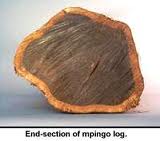World's Most Expensive Trees Millionaire's Purchased
Prized for their hidden assets, the trees with the highest values
on the planet are not coveted for their beauty as an ornamental. They
aren't collectible species, and only grow in certain areas with a
tropical climate. Due to the incredible amount of money one can make
from a single tree, they are also threatened with extinction. When you
Buy Plants, you may be buying treasures!
Known as Mpingo in the Tanzanian dialect, the wood from an African Blackwood (
Dalbergia melanoxylon)
fetches $25,000 per cubic meter. That's roughly 10.7 square feet, which
translates to a piece of trunk measuring about 2-feet by 5-feet. The
wood is used to make the finest quality wind instruments, and highly
prized by wood carvers.
Once indigenous to four countries, this very slow-growing tree now
only exists in Tanzania and Northern Mozambique. It takes 50-70 years to
mature, and without sustainable forestry being practiced in Ethiopia
and Kenya, they no longer have this precious commodity. Things are
changing in Tanzania where collecting seed from the remaining trees and
replanting practices have begun, but not enough to supply the demand.
Used for a variety of purposes in the Eastern world, the aromatic oil
of the Agarwood tree (Aquillaria malaccensis) is the highest priced
aphrodisiac and essential oil you can buy. Possessing top quality oud
from trees in the wild in great quantities would make you very wealthy
instantly as it is pricier than gold. A pound of gold in the United
States currently has a value of just under $20,800. A pound of oud oil
is commands $25,000 on the market.
The heartwood is also valuable in India, Pakistan and Asia as
incense. This brings the value of an Aquillaria tree up sharply with the
price that its wood chips and powder commands. In China, a sapling
could bring upwards of $600, and a carving from the heartwood about
2-feet in length is worth about $125,000.
Oud oil has many waiting markets. It is used for healing, perfumes
and is highly sought after during religious holidays like Ramadan and
Eid. Oud incense is in use in homes and temples throughout this part of
the world. The Saudis spend 600 million on oud just for Ramadan.
Treasured for thousands of years, legal and illegal over harvesting
has made the wild Agarwood tree a rarity indeed. In recent years,
plantations are springing up across this part of the world, and while
the oil and wood harvested from a cultivated tree is still highly
valuable, its quality and market value is lower than that from a wild
tree.
Buy Trees




























